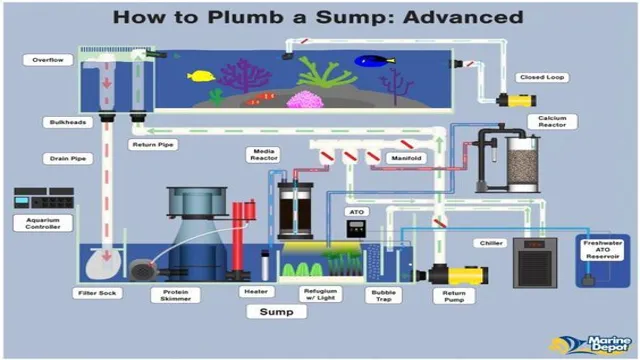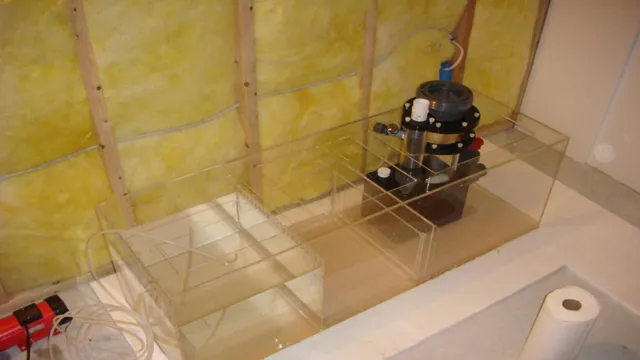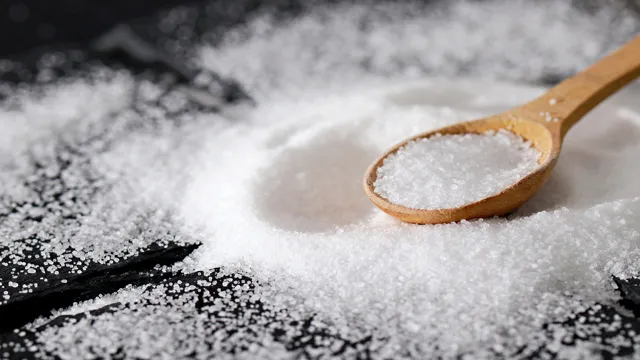Are you looking to add some life and color to your reef aquarium? Look no further than Arag-Alive! This live sand substrate creates a natural, biologically active environment for your fish and invertebrates to thrive. But what exactly is Arag-Alive? It’s live sand that is cultured from real ocean sand and contains beneficial microbes, bacteria, and other microfauna. When added to your aquarium, it kickstarts the nitrogen cycle and helps maintain water quality by breaking down waste products.
Not only does Arag-Alive provide essential nutrients for your aquarium’s inhabitants, but it also enhances the aesthetics of your tank. With a variety of colors and grain sizes available, you can create a natural-looking environment that mimics the ocean floor. So why not add some Arag-Alive to your reef aquarium today? Your fish and invertebrates will thank you for it, and you’ll be able to enjoy a more vibrant and healthy underwater world in your home.
Introduction
Adding Arag-Alive to your reef aquarium is a great way to ensure a healthy and vibrant environment for your fish and other marine life. Arag-Alive is a live sand that is rich in beneficial bacteria, which is essential for maintaining a balanced ecosystem in your aquarium. To add Arag-Alive to your tank, first, you should rinse the sand thoroughly under tap water until the water runs clear.
After the sand is rinsed, spread it evenly across the bottom of your aquarium, ensuring that it is at least 1 to 2 inches deep. Once the sand is in place, add saltwater slowly to the tank until it is about half full. Then you can add your live rock and other decorations before filling the tank the rest of the way with saltwater.
After adding the sand, you should wait at least 24 hours before adding any fish or other aquatic life to allow the sand to settle and the bacteria to establish themselves. With proper care, your Arag-Alive sand will provide a beautiful and healthy environment for your reef aquarium.
Overview of Arag-Alive
Arag-Alive is a premium live sand substrate designed for marine aquariums. This substrate is specifically created to provide the ideal conditions for beneficial bacteria to thrive and help maintain a healthy aquarium. Arag-Alive is composed of natural materials, such as calcium carbonate, which provides essential trace elements and minerals while also buffering the pH levels of the water.
Its fine grain size and texture create a realistic reef environment and serve as a home for various microfauna, such as copepods and amphipods. With Arag-Alive, aquarists can recreate the natural ocean habitats that their fish and coral species require. This substrate is easy to use, promotes a healthy aquarium ecosystem, and eliminates the need for chemical additives, making it an excellent choice for any aquarist looking for a natural and effective way to maintain their reef tank.
Preparing Your Aquarium
Adding Arag-Alive to your reef aquarium is a great way to help establish a healthy environment for your fish and coral. Before adding Arag-Alive, it is important to prepare your aquarium to handle the changes that will occur. Start by performing a 20-30% water change, making sure to clean the gravel and rocks with a siphon.
This will help remove any debris or waste that may have accumulated. Next, add a small amount of Arag-Alive sand to your tank, allowing it to settle for a few hours. Once the sand has settled, you can then slowly add the rest of the Arag-Alive sand in stages.
It is important to keep an eye on the water quality during this process, using a test kit to ensure proper levels of ammonia, nitrite, and nitrate are maintained. Additionally, adding a protein skimmer and a good filtration system can help further maintain the health of your aquarium. With these steps, you can successfully add Arag-Alive to your reef aquarium and enjoy a healthy and vibrant ecosystem for your marine life.
Testing Your Water
Testing Your Water Before adding any fish or other aquatic creatures to your aquarium, it’s essential to ensure that the water is prepared for them. One important step in this process is testing the water. This is the only way to determine if the conditions in your tank are suitable for your new pets.
Testing the water will alert you to any potential issues, such as high levels of ammonia, nitrites, or nitrates, which can be harmful or even fatal to your fish. To test your water, there are a variety of testing kits available. These kits will typically include test strips or liquid reagents that you can use to measure the levels of various chemicals and compounds in your water.
Follow the instructions carefully and record the results. Once you have an accurate picture of your water’s chemistry, you can take steps to adjust it if necessary. There are a variety of water treatments available, such as pH balancers and water conditioners, that can help stabilize the water.
Make sure to follow the instructions on any products you use carefully. Testing your water is an important step in ensuring the health and well-being of your fish and other aquatic creatures. By testing regularly and making adjustments as necessary, you can help ensure that your tank remains a safe and healthy environment for your pets to thrive. (See Also: How to Make an Aquarium in Bloxburg: A Step-by-Step Guide for Beginners)
Cleaning Your Aquarium Sand
Cleaning your aquarium sand is an essential task that should be part of your regular maintenance routine. Preparing your aquarium properly is key to ensuring a healthy and thriving environment for your aquatic pets. When cleaning your aquarium sand, the first step is to remove any debris that has accumulated on the surface.
You can do this by using a siphon or a gravel vacuum. It is important not to stir up the sand too much, or you risk releasing harmful bacteria and toxins that can harm your fish. After removing the debris, you can rinse the sand thoroughly with clean water to remove any leftover dirt or residue.
This step is crucial to prevent any unwanted substances from affecting the water quality in your aquarium, which can lead to the development of harmful algae or other problems. Through regular cleaning, your aquarium sand can remain a safe and healthy environment for your aquatic pets to thrive.
Adding Arag-Alive to Your Aquarium
If you’re looking to add live sand to your reef aquarium, Arag-Alive is a great option. Before adding it to your tank, it’s important to rinse it thoroughly with saltwater. This helps to remove any loose debris and dust that may have accumulated during packaging and shipping.
Once you’ve rinsed your Arag-Alive, you can gently spread it across the bottom of your tank. Be sure to distribute it evenly, creating a layer that’s no more than 1-2 inches thick. After adding your Arag-Alive, you’ll want to wait a few days before introducing any fish or other livestock.
This gives the live sand time to establish and stabilize, which is important for maintaining good water quality and a healthy marine environment. With proper care and maintenance, your Arag-Alive can provide a great foundation for your aquarium and help to create a thriving ecosystem for your reef fishes and other aquatic species.
Choosing Your Arag-Alive Product
Adding Arag-Alive to your aquarium can be an exciting and rewarding experience. The process of selecting the right product can be overwhelming. Arag-Alive is a substrate made from natural materials that not only enhances the look of your aquarium but also helps maintain water chemistry and filter harmful toxins.
There are different Arag-Alive products available based on the color and size you prefer. Arag-Alive Fiji Pink is a popular choice for those who desire a pinkish hue in their aquarium, while Arag-Alive Hawaiian Black imparts a deep, dark look. You can also choose a grain size that suits your aquarium – fine, medium or coarse.
A helpful tip when selecting the product is to ensure that the grain size is appropriate for your aquatic animals. The substrate is easy to set up and can be used in both new and established aquariums. Remember, Arag-Alive is a perfect way to enhance the look of your aquarium while also maintaining a healthy environment for your aquatic pets.
Calculating the Amount of Arag-Alive Needed
Calculating the right amount of Arag-Alive for your aquarium can be a bit of a daunting task, but it’s important to get it right. The first step is to measure the length, width, and depth of your aquarium. Then you can use an online calculator or a simple formula to determine how much Arag-Alive you need.
Typically, you’ll need between 1 and 2 pounds of substrate per gallon of water. It’s important to remember that you don’t want to overcrowd your tank with substrate, as this can lead to oxygen deprivation and other issues. Once you’ve calculated the amount you need, you can add it to your aquarium.
It’s a good idea to rinse it thoroughly beforehand to remove any dust or debris. With the right amount of Arag-Alive, your aquarium will have a healthy and thriving ecosystem.
Pouring and Spreading the Arag-Alive
When it comes to adding Arag-Alive to your aquarium, the process is fairly straightforward. The first step is to pour the Arag-Alive into your tank. Make sure to slowly pour it in and avoid any splashing as it can cloud up the water. (See Also: How to Increase Oxygen Levels in Aquarium: Tips and Tricks for Healthy Fish!)
Once the Arag-Alive is in the aquarium, it’s important to spread it out evenly. You can use your hands or a stirring stick to evenly distribute the sand throughout the tank. The sand should settle at the bottom, creating a natural-looking substrate that can benefit your aquarium’s ecosystem.
Arag-Alive is an excellent way to help maintain alkaline levels and promote healthy bacterial growth. By adding Arag-Alive to your aquarium, you’re creating a more natural and stable environment for your aquatic friends to thrive in.
Caring for Your Newly Added Arag-Alive
Adding Arag-Alive to your reef aquarium is an exciting adventure that requires proper care to ensure its longevity. Before introducing the Arag-Alive, it is crucial to understand its composition and properties. Arag-Alive is made up of live sand that contains beneficial microorganisms and bacteria.
These beneficial creatures are essential in establishing a healthy aquatic ecosystem, which will support the growth and development of your aquarium inhabitants. It is essential to follow a few simple steps to ensure the successful addition of Arag-Alive to your reef aquarium. First, remove the old substrate and any debris from the aquarium.
The next step is to rinse the Arag-Alive thoroughly with freshwater to remove any excess dust and debris. After rinsing, carefully pour the Arag-Alive into the aquarium, ensuring that it is evenly spread out. Since the Arag-Alive contains live organisms, it is crucial to avoid excessive disturbance of the substrate for the first few weeks.
Allow the substrate to settle and adjust to its new environment before introducing any new organisms to the aquarium. Proper care of the aquarium’s water parameters, such as temperature, pH, and salinity, will facilitate the growth of beneficial microorganisms and bacteria. In summary, adding Arag-Alive to your reef aquarium is an excellent opportunity to establish a healthy aquatic ecosystem.
Proper care, including rinsing thoroughly, evenly spreading out the substrate, avoiding excessive disturbance, and maintaining proper water parameters, is essential to ensure the growth and longevity of the live organisms in the Arag-Alive. By following these simple steps, you can create a thriving and beautiful reef aquarium that will be the envy of all who see it.
Monitoring Your Water Quality
Caring for your newly added Arag-Alive is crucial for the overall success of your aquarium. After all, the water quality in your tank is vital to the health of your fish and other marine creatures. That’s why monitoring your water quality should be a top priority.
One of the easiest ways to do this is by testing the water regularly. There are various test kits available in the market that can help you measure the pH, ammonia, nitrite, and nitrate levels in your water. Maintaining the correct levels of these chemicals is a must for the survival of your aquatic pets.
Another critical aspect is water changes. Changing the water in your aquarium regularly is necessary as it helps remove accumulated toxins that can harm your aquarium inhabitants. A simple rule is to change 10-15% of your water every week and 25-30% every month.
By taking these simple steps, you can ensure that your Arag-Alive and the rest of your aquarium thrives and stays healthy for years to come.
Maintaining Your Aquarium Sand Bed
If you recently added aragonite sand to your aquarium, you may be wondering how to properly care for it. Arag-Alive sand contains beneficial bacteria that help to maintain a healthy ecosystem in your tank. To keep your sand bed healthy, it’s essential to perform regular maintenance.
You can vacuum the top layer of sand using a gravel siphon to remove any debris. This will also help prevent the buildup of harmful gases in the sand bed. Ensure that the sand bed is not disturbed too much as this can release harmful toxins into the water. (See Also: How to Fit a Wire Top to Aquarium with Filler: Expert Guide and Tips)
Additionally, make sure to test your water parameters regularly to ensure that they are within the appropriate range. By following these simple steps, you can maintain a thriving sand bed that supports a healthy aquatic environment in your aquarium.
Conclusion
In conclusion, adding Arag Alive to your reef aquarium is as easy as a sea breeze. Simply follow these steps: clean your aquarium thoroughly, pour the Arag Alive into your aquarium, and let the magic unfold. With its natural live sand and beneficial bacteria, your reef aquarium will thrive and your corals will pop.
So don’t hesitate, add the Arag Alive and watch your aquarium come alive!”
FAQs
What is Arag-Alive and how does it benefit my reef aquarium?
Arag-Alive is a live, porous substrate that contains beneficial bacteria and microorganisms to promote a healthy and stable reef environment. It also helps to maintain natural pH and calcium levels.
How do I add Arag-Alive to my reef aquarium?
It is recommended to rinse Arag-Alive thoroughly with warm water before adding it to your aquarium. Then, spread the substrate evenly across the bottom of the tank, making sure to create a depth of at least 1-2 inches.
Will Arag-Alive cloud up my aquarium water?
Initially, there may be some cloudiness in the water as the substrate settles, but this should clear up within a few hours. It is important to not disturb the substrate too much during this settling period.
How often should I replace Arag-Alive in my reef aquarium?
Arag-Alive does not need to be replaced unless there are specific issues with your aquarium that require the substrate to be removed and replaced. Otherwise, it can last for years as long as it is properly maintained.
Can I use Arag-Alive with a sand-sifting fish in my reef aquarium?
Yes, Arag-Alive is safe to use with sand-sifting fish as they will help to maintain the substrate by preventing debris buildup. Just be sure to not disturb the substrate too much with frequent digging or sifting.
Do I need to supplement my reef tank with any additional nutrients or supplements when using Arag-Alive?
It depends on the specific needs of your reef aquarium. Arag-Alive contains beneficial bacteria and microorganisms that can help maintain healthy pH and calcium levels, but additional supplements or nutrients may be needed depending on the specific inhabitants of your tank.
Can Arag-Alive be used in a freshwater aquarium?
Arag-Alive is specifically designed for use in reef aquariums, and is not recommended for use in freshwater aquariums. It is important to use substrates that are specific to the type of aquarium being used to avoid potential issues.






